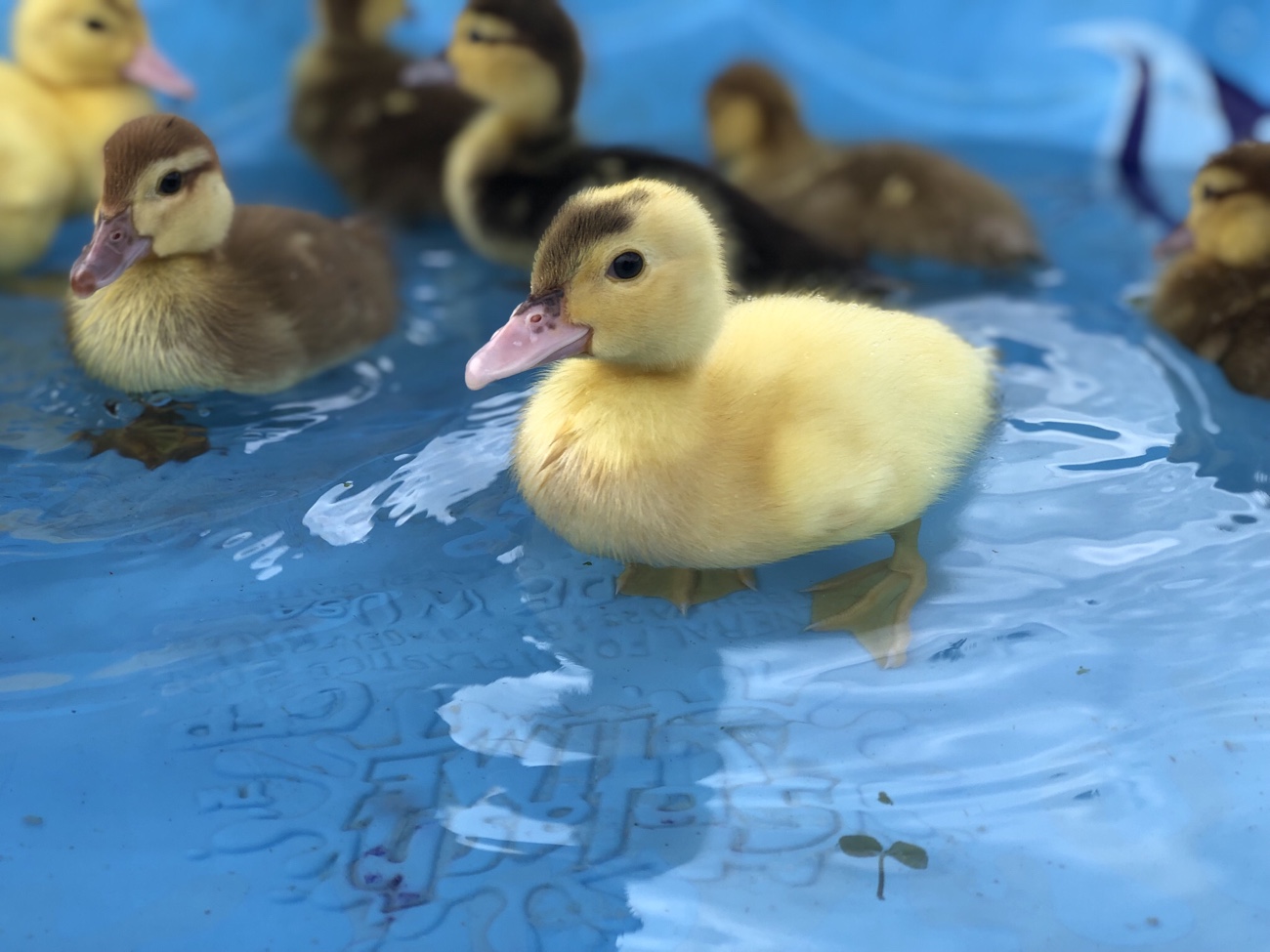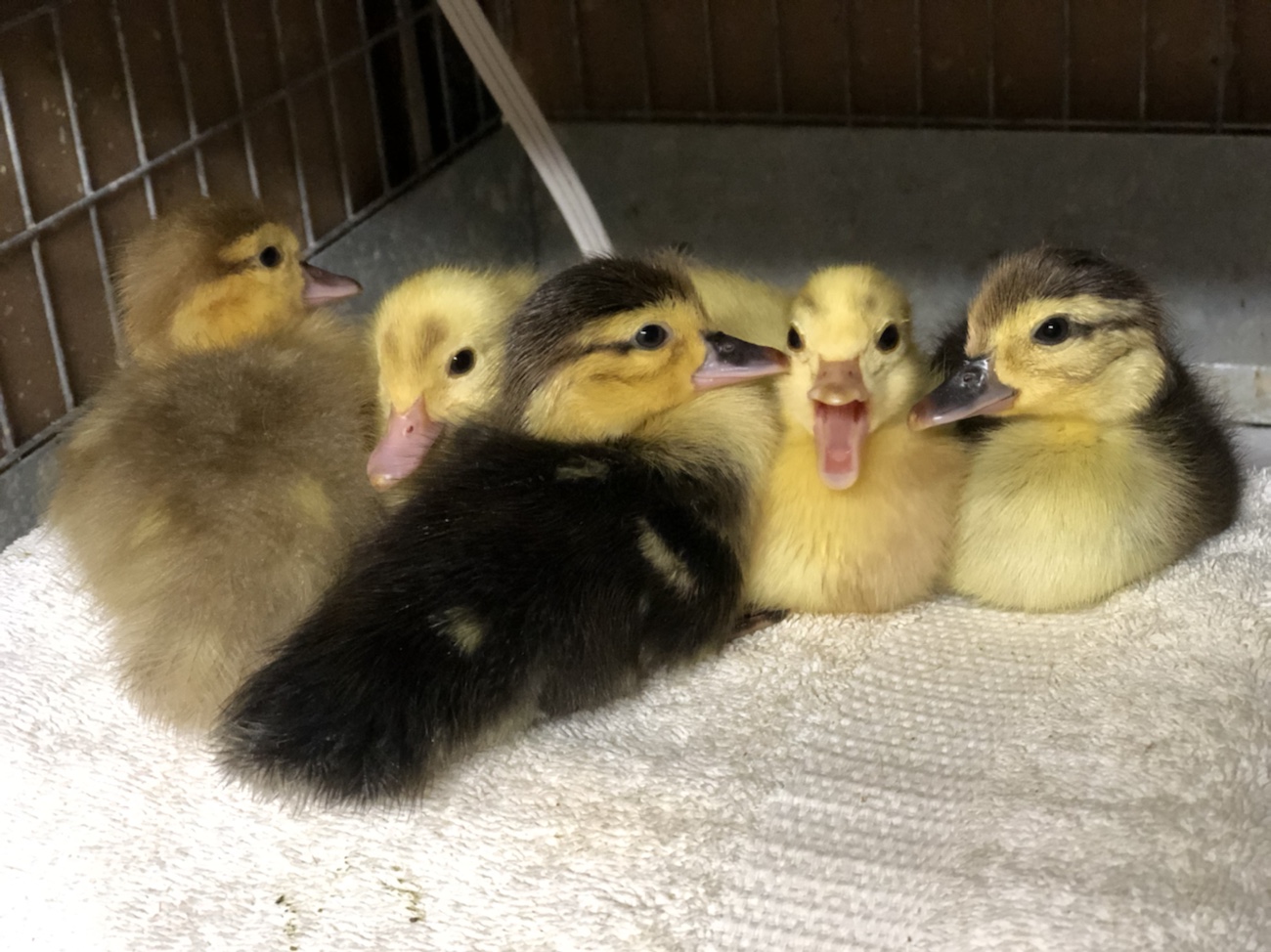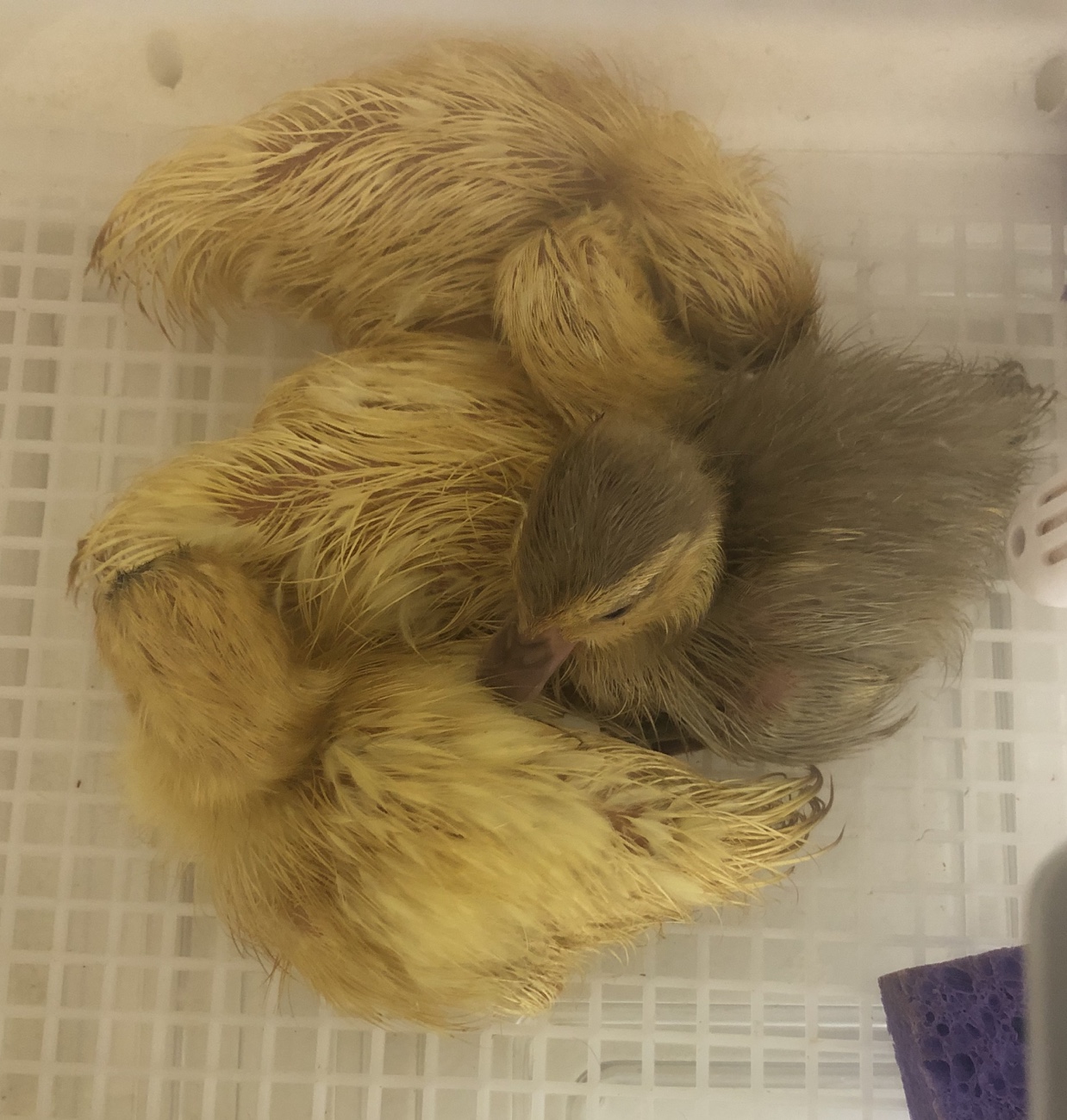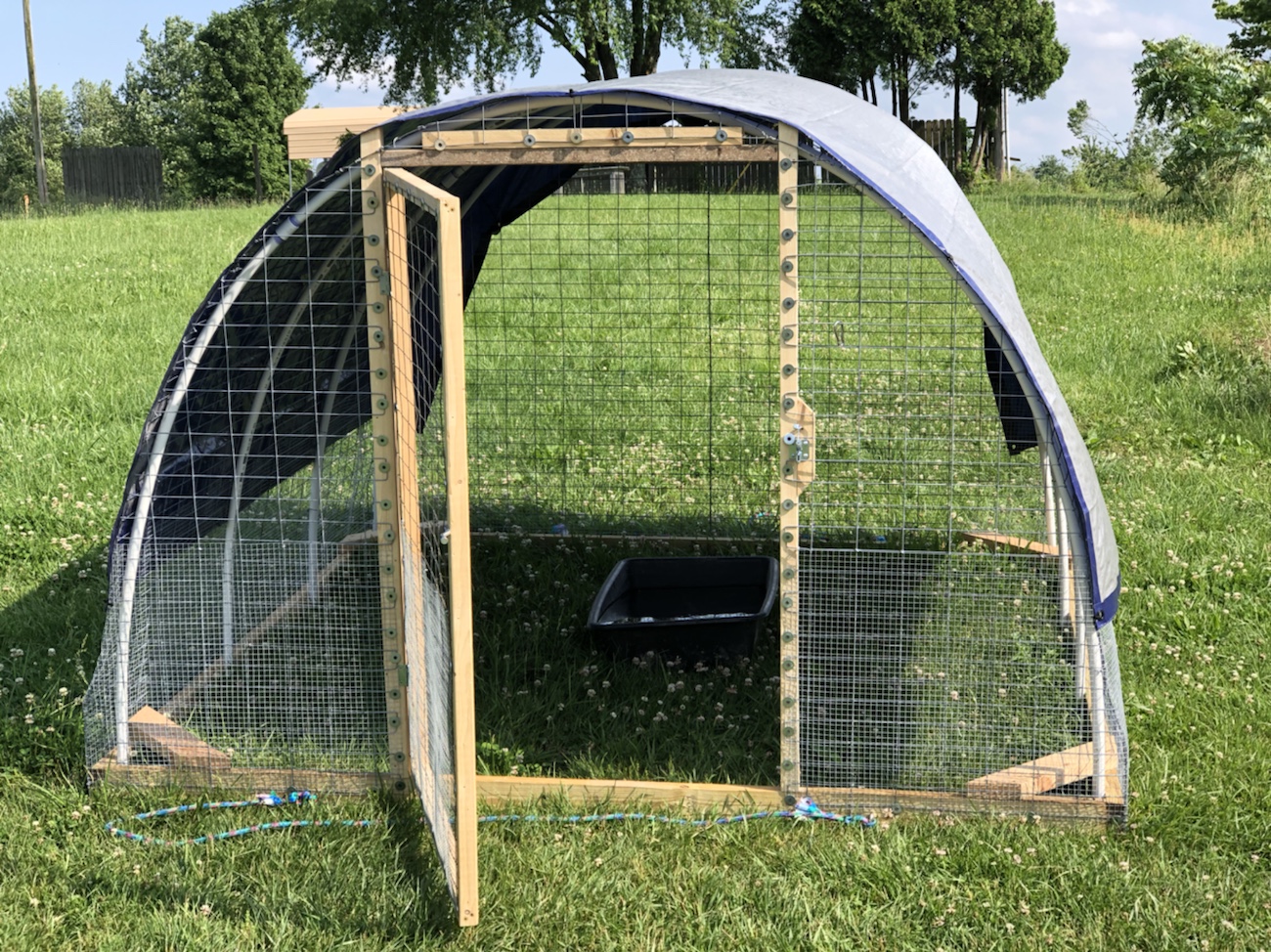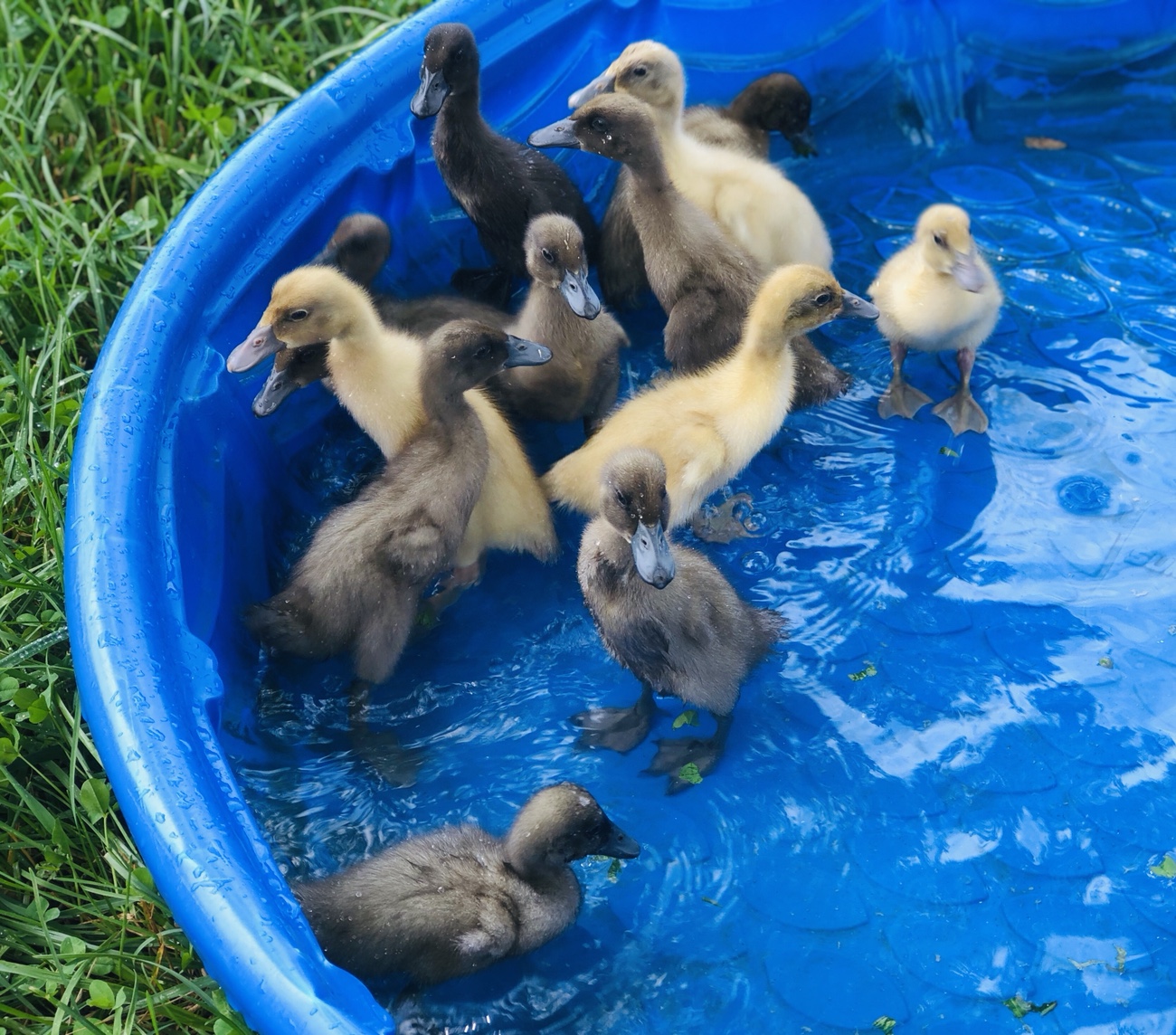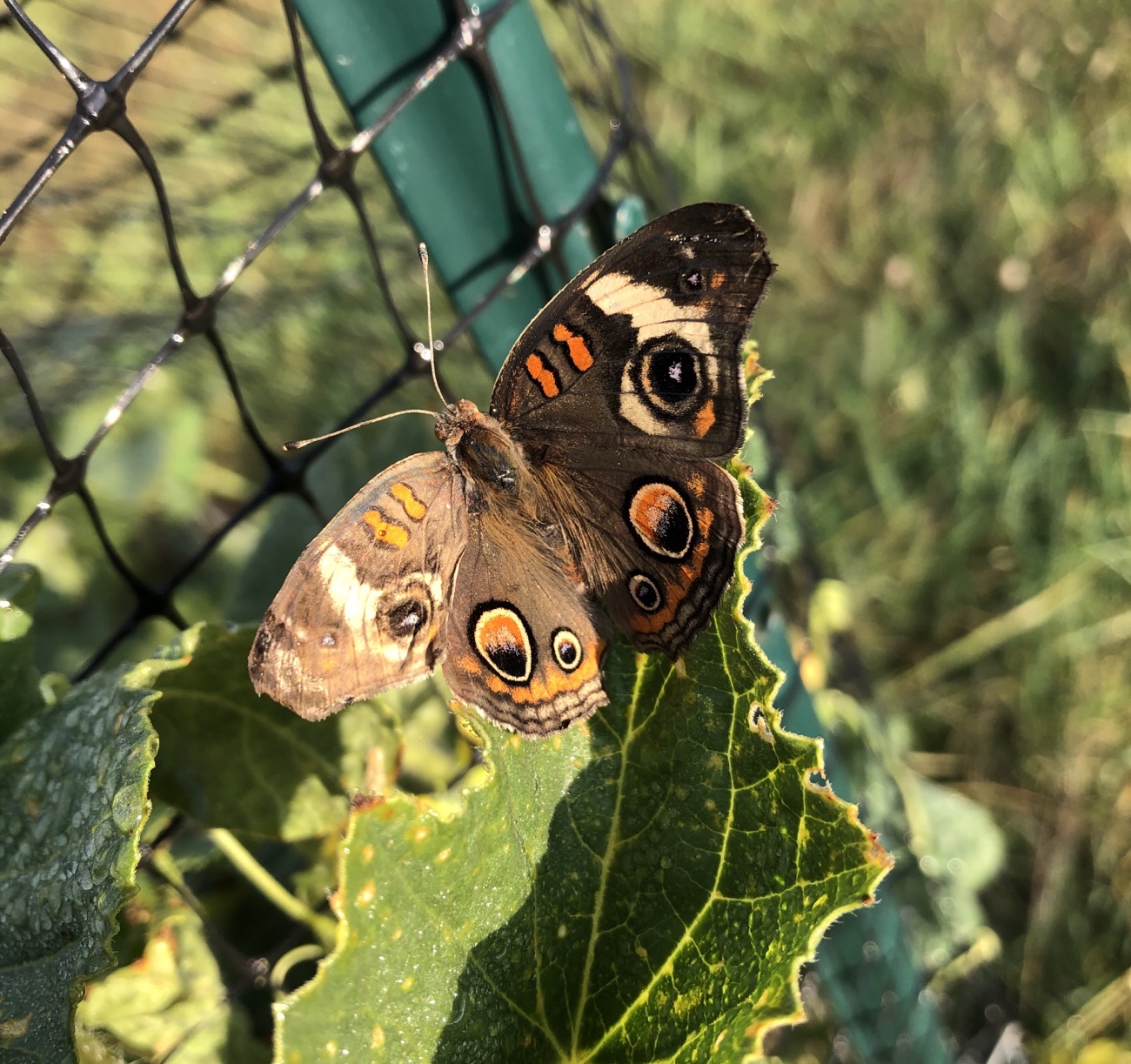
There’s been a lot of poetry lately, but – rest assured – there’s more going on here than just leisurely verse composition. As we’re starting to finally feel Autumn weather (I should probably say “as we’re plunged into…”), there are some eggciting goings on to share with you.
Chickens
We’re finally seeing eggs…more each day! This is the rewarding point at which we’re finally seeing the fruits of our labor (raising chicks and ducklings to the point of lay). It’s been a treat to check for eggs and find that there are new layers. The Easter Egger pullets are at point of lay, and have gifted us with an array of egg colors, including pink, brownish pink, and green. It seems that there’s a new hue each day.
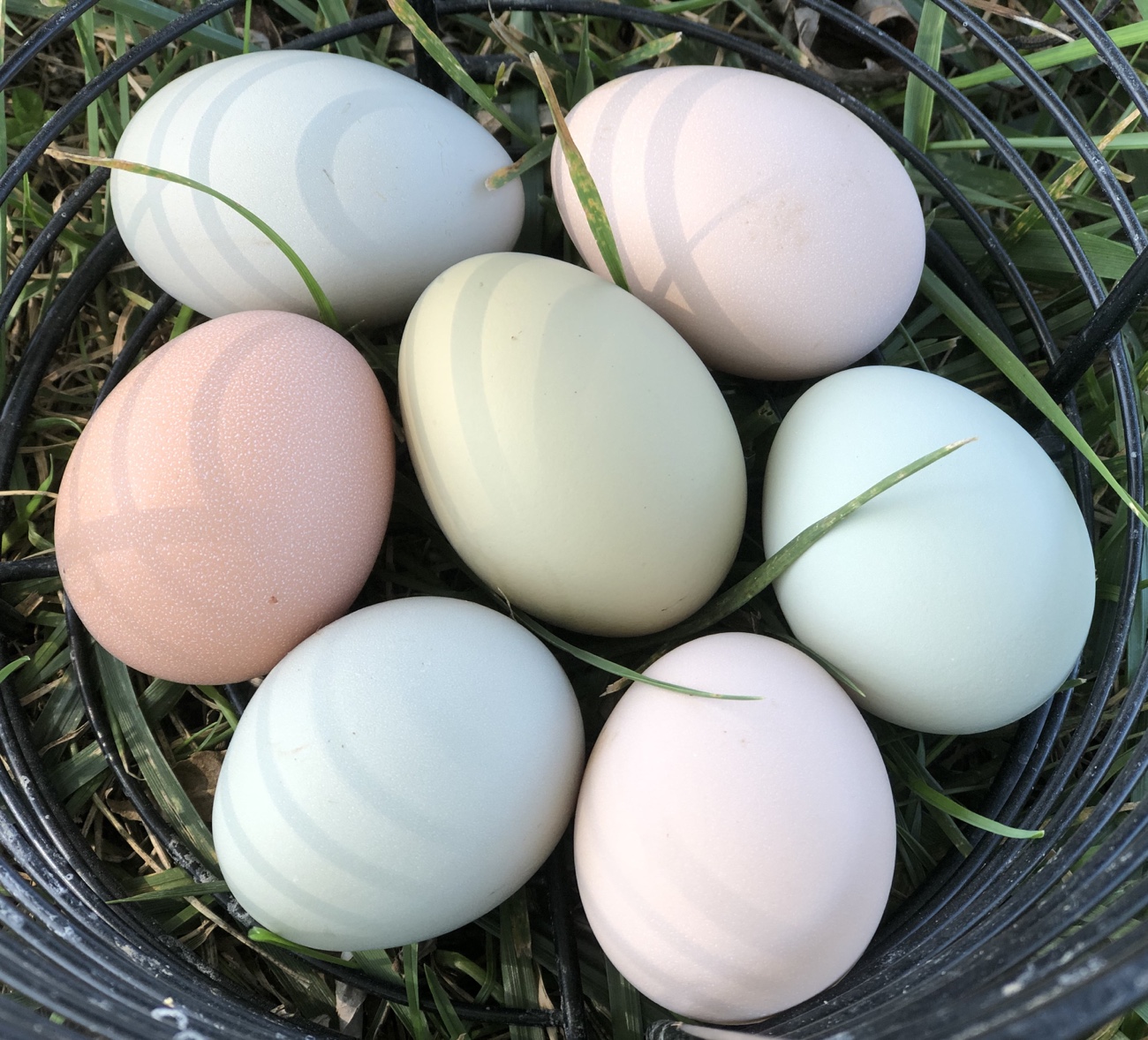
One particularly striking egg is an olive shade, which likely belongs to the Olive Egger pullet – she’s a bit younger than the Easter Egger girls, but within the “normal” timeframe for a pullet to start laying (and her comb and wattles are red, another indicator). Short of catching her in the act, though, I can only guess that she’s the layer of the mystery egg. The older French Black Copper Marans (FBCM) pullets are also sporting red combs and wattles, and have been receptive to the roosters, so I know it’s just a matter of time before we find dark brown eggs in the coop, too…hopefully, in a nest box!
And, surprise: there are eggs in the incubators! While it may seem late in the season for chicks and ducklings, this is, strategically, a good time to hatch because they’ll begin laying in Spring. A batch of Muscovy eggs is about 2/3 of the way through a 5 week incubation period, and a batch of Isbar eggs is a week in. Best of all, these are from our own stock, so we know the health status of the layers and how the eggs were stored and handled prior to incubation, and we control the incubation techniques – all of which are important factors for a successful hatch. In a couple more weeks, we’ll have ducklings and chicks on the farm again.
The youngest group of FBCMs will be ready to be integrated into the main flock soon. They bring a third gene pool to our FBCM stock, which includes Greenfire Farms, Jeane, Davis, Presley, Little Peddler, Mashburn, and imported bloodlines. We select for egg color, conformation, and temperament in our birds. Some have been friendly enough that they would hop onto our shoulder or sit in our laps – not typical behavior for chickens, but it’s fun when they do.
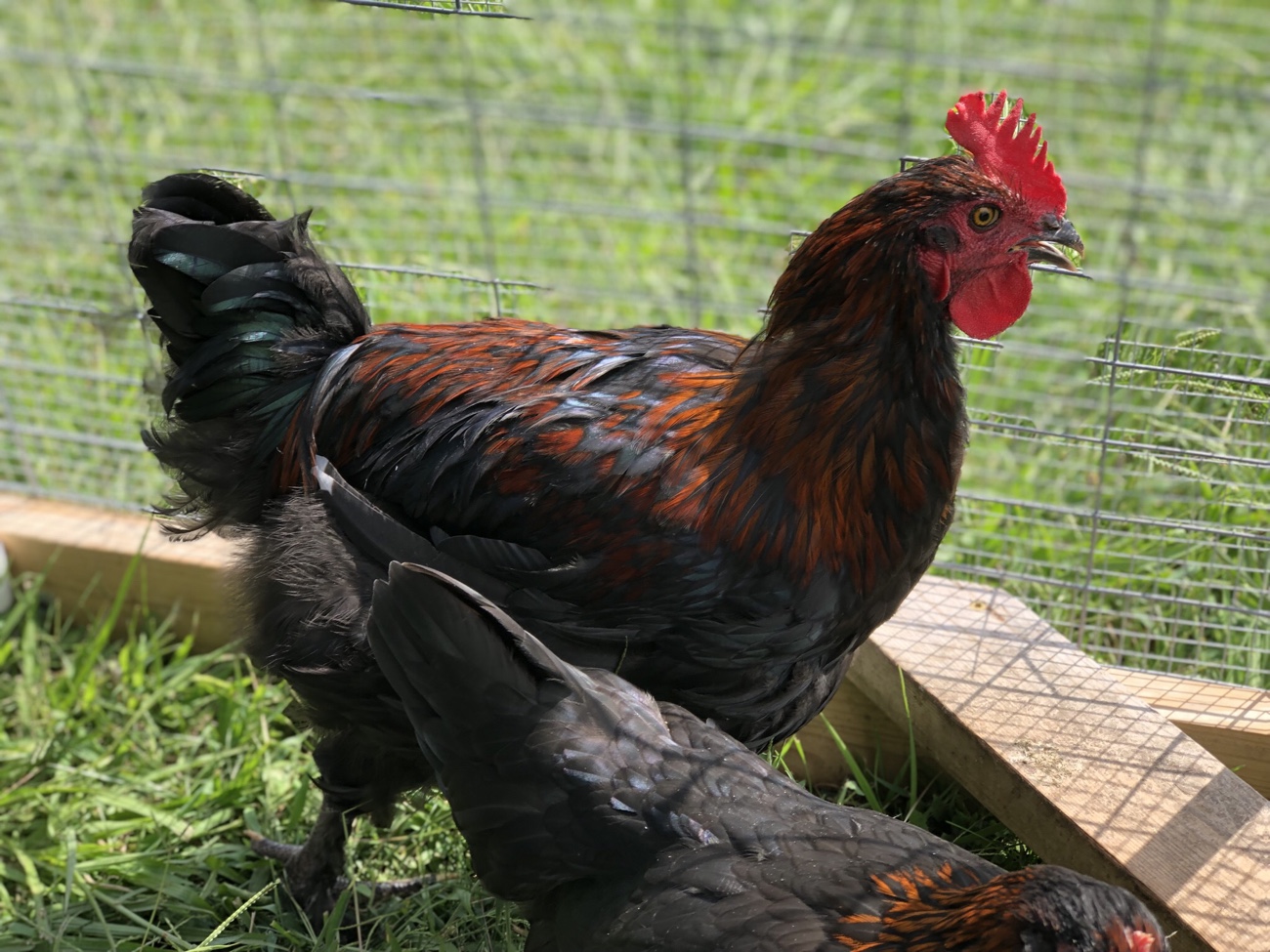
Ducks
The Runner ducks have also begun to reach the point of lay. The oldest, a fawn and white duck, has been laying a cream-colored egg for a couple of months. Recently, a small cream-colored egg has appeared in the duck coop, leading me to believe that one of the ducks in the Black/Blue/Silver (BBS) group has also begun laying. It surprised me because I was expecting a blue-tinted egg (the BBS Runners all hatched from blue eggs), but it’s genetically possible for the BBS ducks to lay cream-colored eggs, too. At this point, it’s just not clear who’s laying that egg, but it keeps getting kicked down the ramp in the morning rush. Fortunately, duck eggs are much tougher than chicken, and the eggs have been undamaged after the tumble.
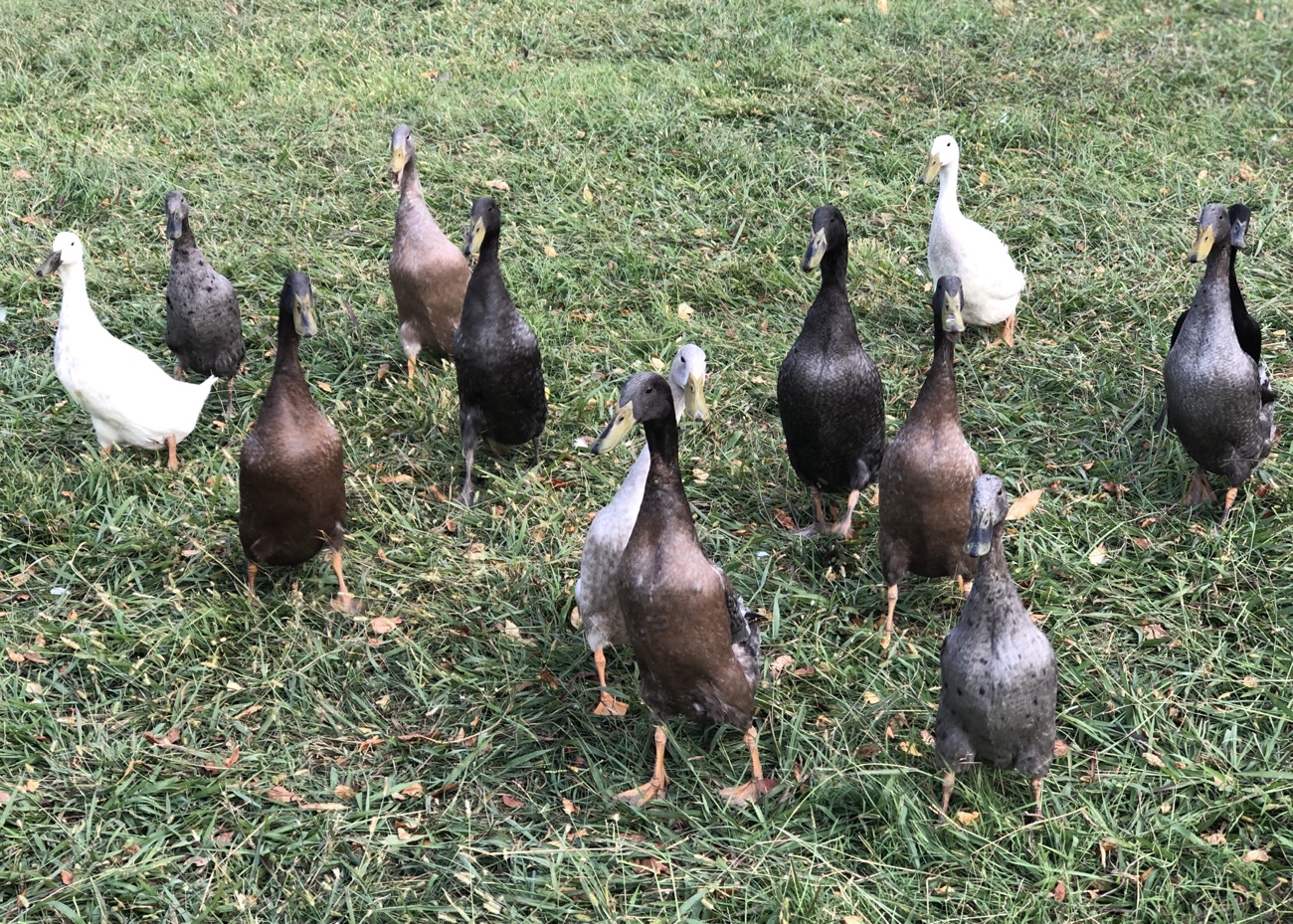
After laying a clutch of enormous eggs, the Muscovy girls are taking a break. I think they’re molting, and they won’t begin to lay again until after they’ve finished and are sporting beautiful new feathers. Molting is resource-intensive, so it’s perfectly understandable that they wouldn’t be laying now. As seasonal layers (like geese), they’ll stop laying before winter, so we may not see more eggs from them until Spring.
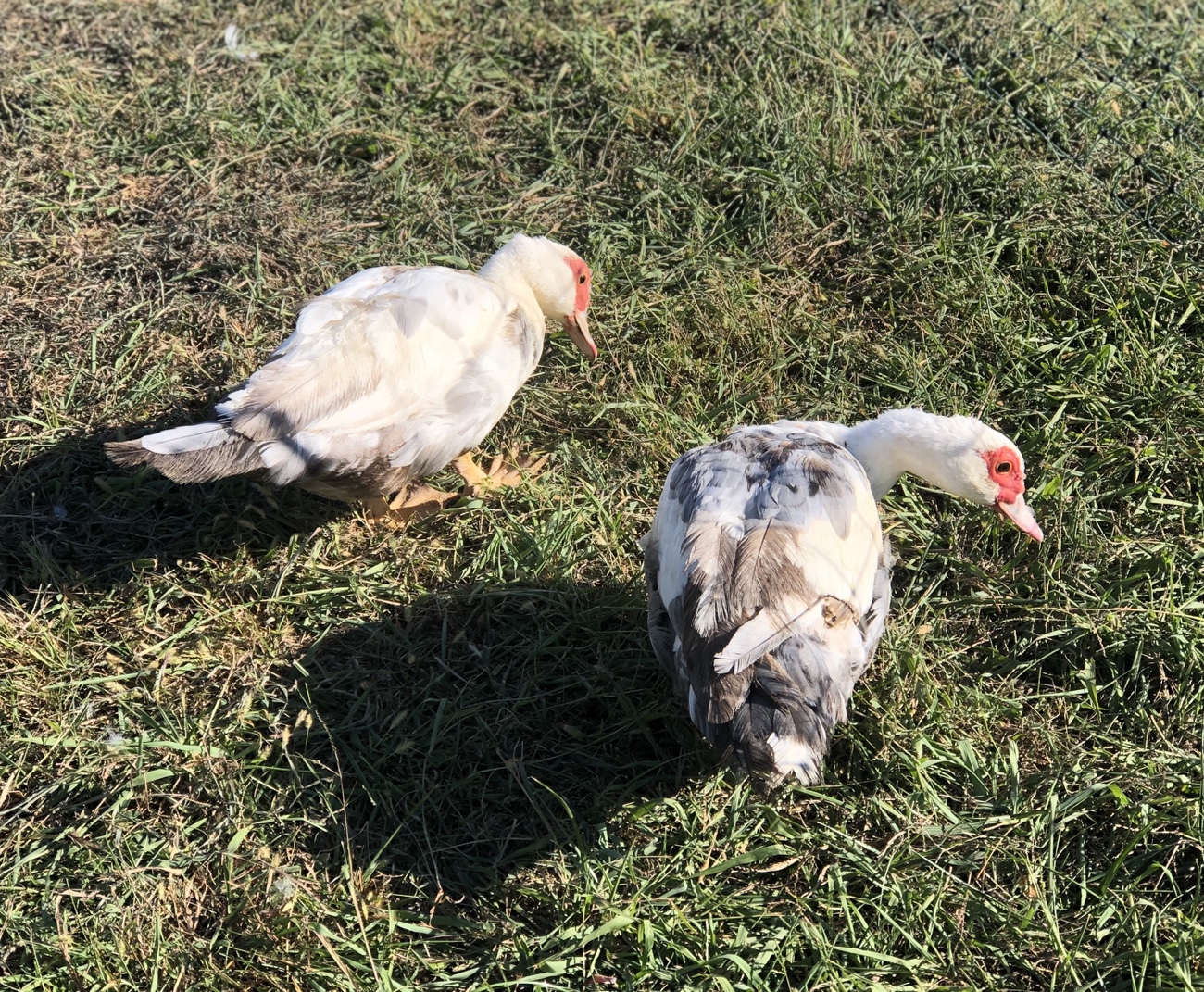
Geese
The geese have been growing nicely on pasture and some of the girls are beginning to show white feathering on their faces; in fact, one goose looks like she’ll have a nearly all-white face. While they’re been mostly staying out of trouble, I had a good fright recently when I went out and found one of the girls I hatched earlier in the year tangled in the electric poultry netting. My best guess is that she must have run or, more likely, flown into the netting and her foot became trapped. In a panic, she flopped around and the netting twisted even more tightly around her foot, hopelessly entangling her. While I don’t know precisely how long she was out there (it had been about an hour and half since my previous check) like that, she was traumatized…and so was I. Frankly, I wasn’t sure if she was going to survive.
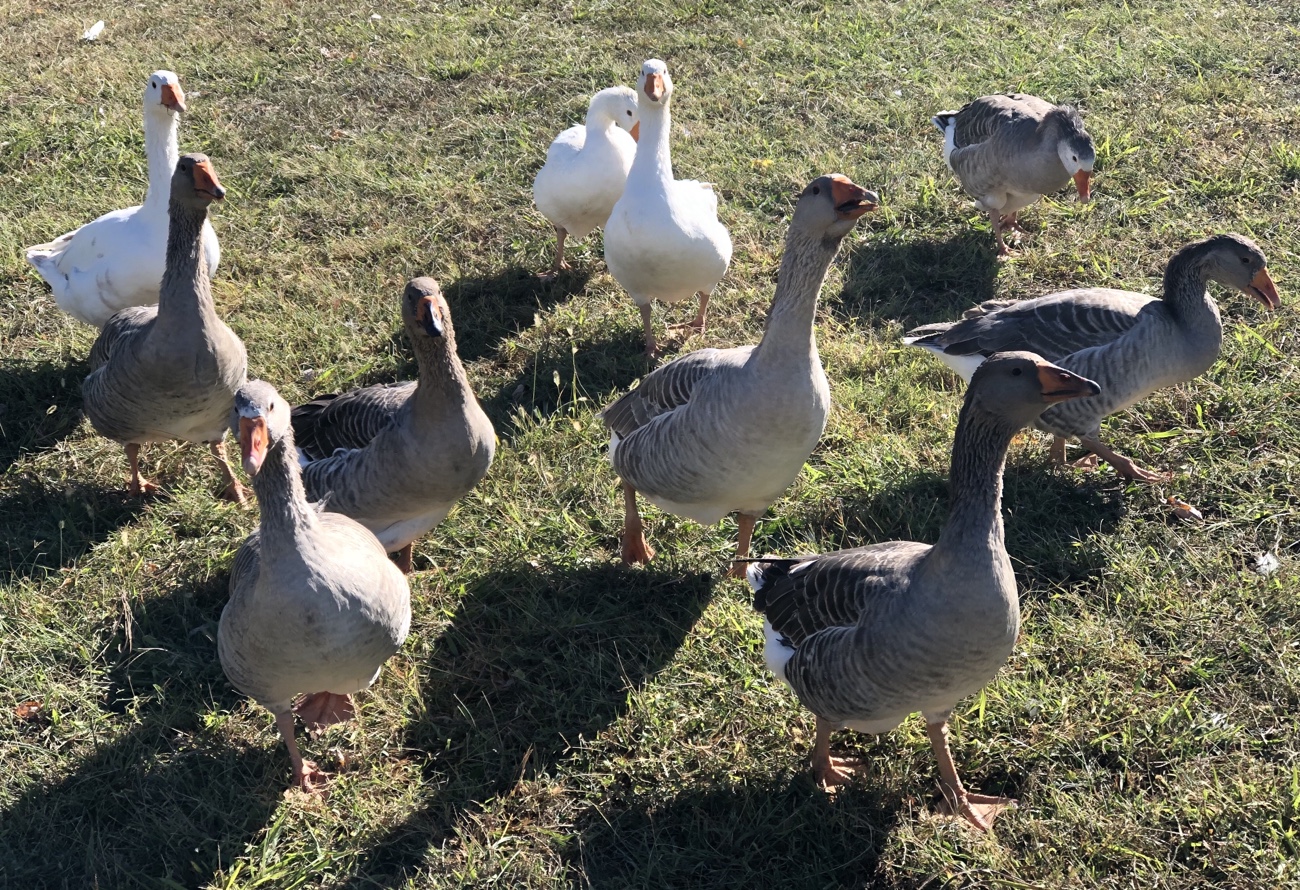
I carried her into the “infirmary” in the garage, placed her in a large cage with a bowl of water (with Nutri-Drench in it), turned off the light to keep her calm, and hoped for the best. After a couple of hours, she was perkier and had clearly improved. After spending the night inside, she was ready to rejoin her gaggle. Within a couple of days, aside from slightly favoring the foot that had been tangled, she appeared to be fully recovered. Needless to say, we’re exploring other options for waterfowl fencing (the poultry netting is only used for a movable grazing area).
Pigs
The pasture pigs are their usual jovial selves, the cooler weather notwithstanding. They seem to do well in either hot (they liked to snuggle up in their house together on sweltering days) or cold weather. In cold weather, we fill their house up with straw, a great insulator, and they nestle into it. The change in seasons means the grass will grow much more slowly than it did in the summer, so we’ll need to supplement their feed with more greens. One of the ways we’ll address this is to increase the amount of alfalfa in their fermented feed, as well as supplementing with dry hay, maple branches, and other forage. While they don’t like the dry hay as much as they do fresh pasture, it will tide them over until Spring arrives again.
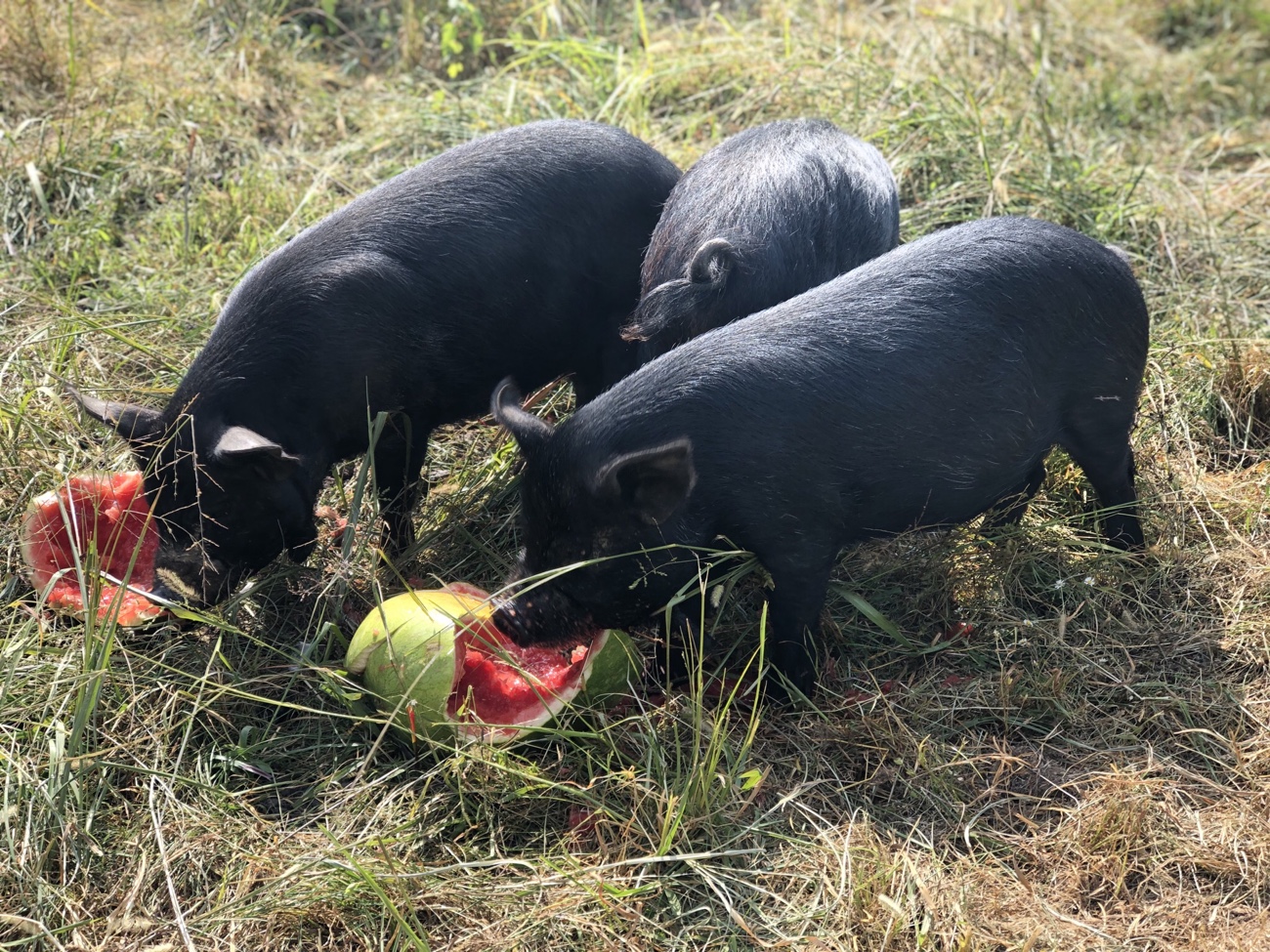
But let’s not forget that Fall means pumpkins – and pigs like pumpkins. While we’ll need a couple for carving our yearly jack o’lanterns, we’ll be on the lookout for surplus pumpkins for the pigs. It may sound selfish, but I’ll probably be removing the seeds and saving them for myself, though!
Muskmelons
We’re harvesting what I suspect may be the last of the melons from the pig-planted volunteers. The ones on the ground have been finished for a couple of weeks, no doubt due to the drought conditions. There are still a number of developing melons of various sizes on the fencing, resting in their repurposed mesh produce bag slings. I was pleased with how well the slings worked – they did imprint the two melons I was able to harvest yesterday, but they kept them from prematurely detaching from the vine and reaching ripeness, so I’d call it a success. It’s great to be able to repurpose what might otherwise have become plastic waste, clogging up the oceans and trapping fish and other wildlife.

Thanks to the pigs, we’ve enjoyed delicious melons from our own patch this year. I saved seeds, too, so that we can intentionally plant them after the last frost risk date next Spring. The pigs are so good at encouraging seed germination that another group of melon seedlings has sprouted up in a former paddock. It’s really too late in the year for them to fruit (they need warmer and sunnier days), but I’m going to try to keep them alive as long as possible. From one melon, many.
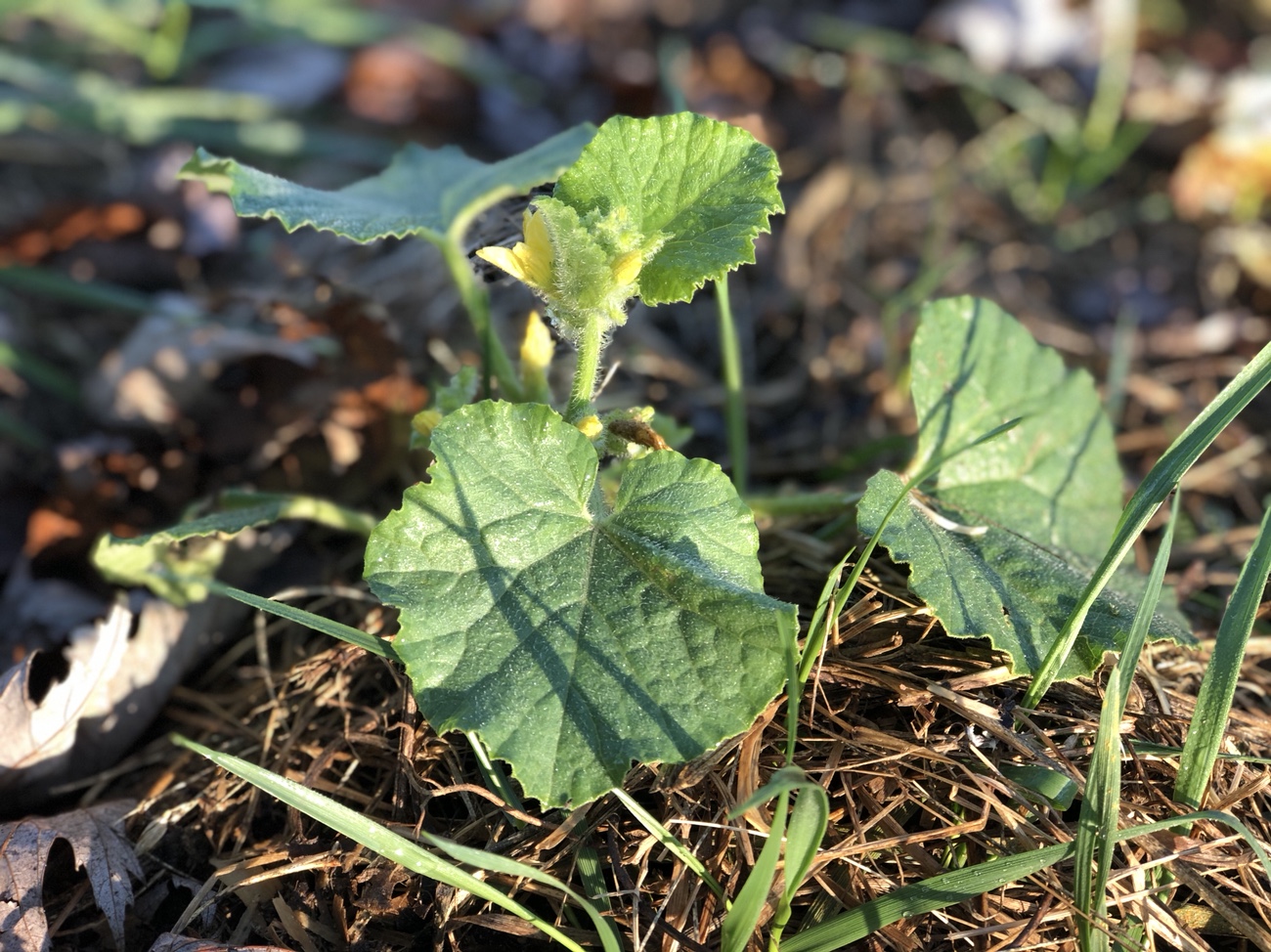
Fall’s coolness is a welcome respite from the almost unbearable heat of Summer, but the dramatic temperature swings are challenging – without a transition period of gradual cooling, it seems very cold after a twenty degree temperature drop (and that happens routinely). From shorts one day to sweaters the next, it’s enough to make your head spin..but we’ll just adapt as best we can and persevere. Resilience!

